New DNA research has confirmed that Christopher Columbus' remains lie in Seville Cathedral in Spain, solving a centuries-old mystery about his final resting place — while also uncovering that he may have been of Sephardic Jewish descent.
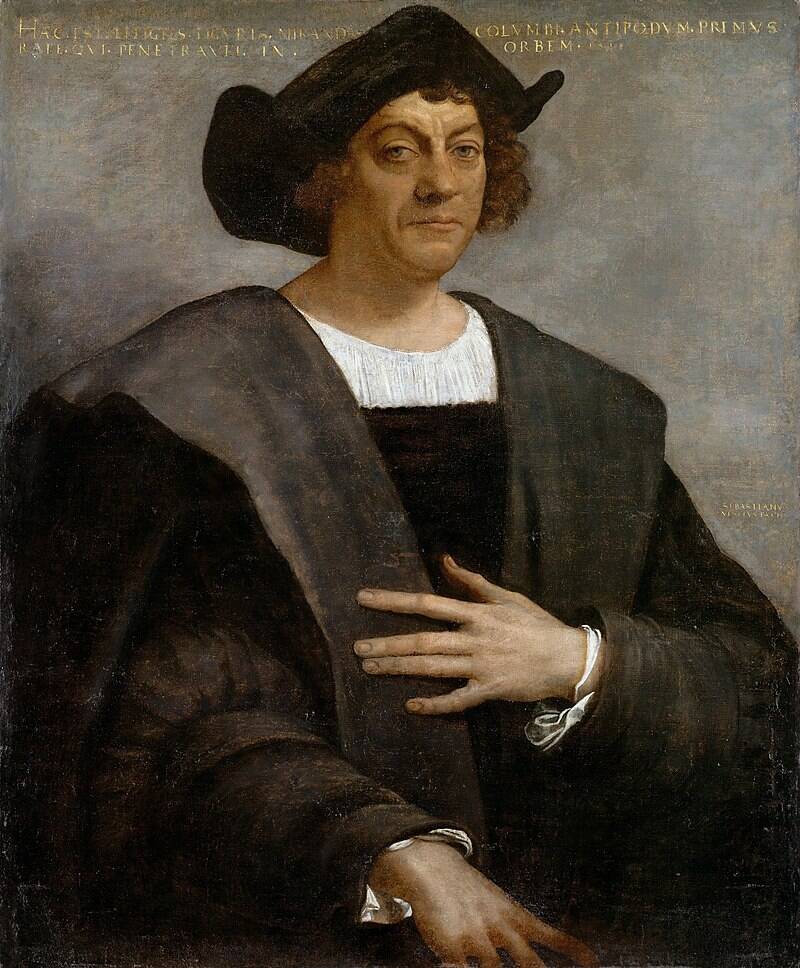
Public DomainPainting of explorer Christopher Columbus, circa 1519.
In 1492, Christopher Columbus sailed the ocean blue, embarking on a voyage that would change the course of history. While his disputed discovery of the New World is well-known, the mysteries surrounding both his final resting place and his origins have puzzled historians for centuries.
After his death in 1506, Columbus’ remains were reburied several times across different countries over the course of hundreds of years, sparking debates over whether his declared final resting place at Seville Cathedral in Spain was actually legitimate.
Now, thanks to groundbreaking DNA research, the question of his burial site has reportedly been solved. Furthermore, surprising details about his origins have come to light, with scientists claiming that he was born in Spain, not Italy, and that he was of Sephardic Jewish descent.
The Death Of Christopher Columbus And The Lingering Questions About Where He Was Buried
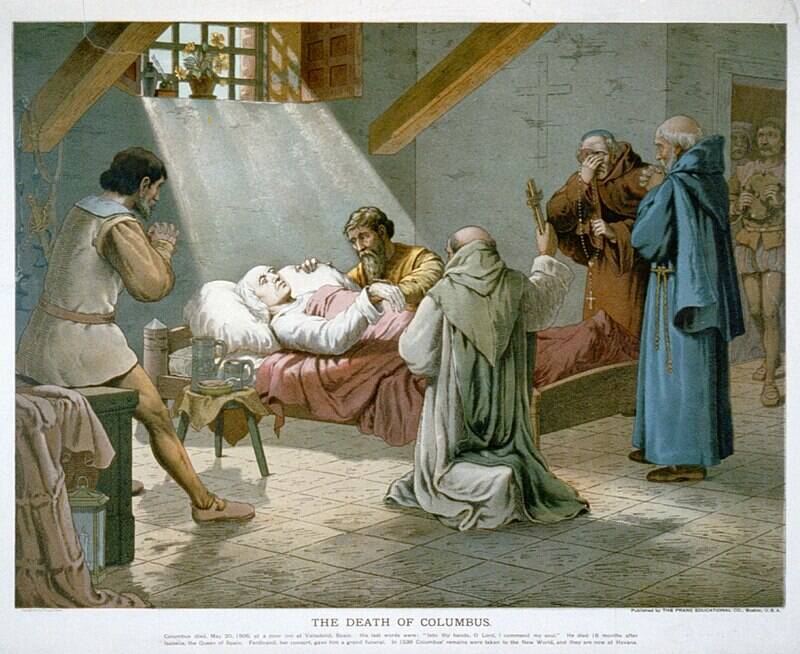
Public DomainAn illustration of Christopher Columbus’ death on May 20, 1506.
At 54 years old, famous explorer Christopher Columbus passed away in Valladolid, Spain in 1506. In the 14 years leading up to his death, Columbus had suffered from bouts of gout and arthritis. His health continued to deteriorate, and he was often bedridden for months at a time.
Upon his death, Columbus was buried at the Chapel of Wonders at the Convent of St. Francis in Valladolid. Then, he was moved at the request of his son to the monastery of La Cartuja in Seville. Then, in 1536, both Columbus’ remains and those of his son were moved to a church in Colonial Santo Domingo, now the Dominican Republic. In his will, Columbus requested to be buried there.
However, when France took control of the island in 1793, Columbus’ remains were interred in Havana, Cuba. They remained there until Spain’s defeat in the Spanish-American War and the relinquishing of Cuba in 1898. From there, Columbus’ remains were moved to the Seville Cathedral.
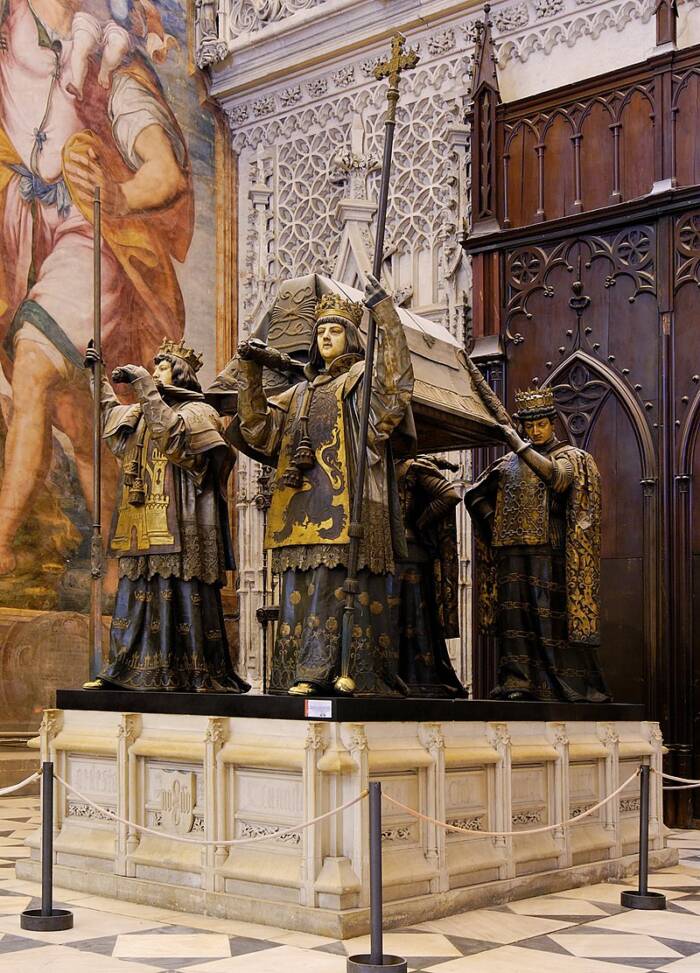
Wikimedia CommonsChristopher Columbus’ tomb at the Seville Cathedral.
Evidently, the frequent shuffling of Christopher Columbus’ remains raised concerns among historians. An initial observation of the remains at Seville Cathedral revealed discrepancies with known information about Columbus’ age at death and general stature. Additionally, Dominican Republic authorities claimed that Columbus’ remains never left the island.
For years, people questioned whether Seville Cathedral really held the remains of Christopher Columbus, prompting Spanish scientists to tackle the mystery for themselves.
Beginning with the collection of DNA from the remains in the Seville Cathedral in 2003, scientists have just now received the answers they were looking for.
New Research Makes Surprising Claims About Where Christopher Columbus Was Born
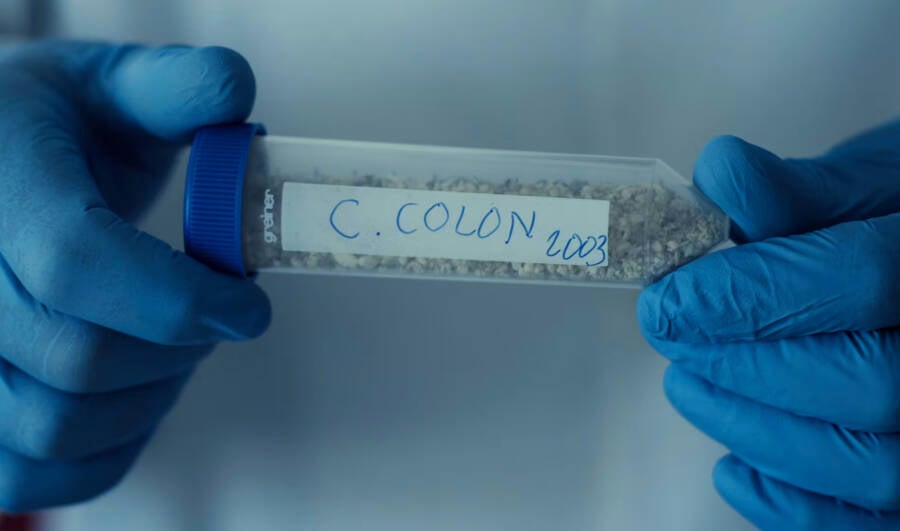
RTVESamples of Christopher Columbus’ bones that were tested by scientists.
In 2003, historians Marcial Castro and José Antonio Lorente opened the tomb of Columbus at Seville Cathedral and collected DNA evidence from bone fragments.
The DNA sample was then compared to the DNA of Columbus’ son Hernando, who is also buried at the cathedral. At the time, the results came back as a match, but there was still a large margin of error. Technology at the time simply could not confirm conclusively that the remains belonged to Christopher Columbus.
Then, in 2020, Spanish broadcaster RTVE began production of a documentary to not only discover the true location of Columbus’ burial site but also shed light on his mysterious origins. Led by Lorente, an expert forensic scientist, the documentary crew explored these historical mysteries.
The investigation involved comparing the 2003 DNA sample to remains from many of Columbus’ reported relatives. To increase the validity of the DNA testing, the research team had separate laboratories from Spain, the United States, Mexico, and Italy test the items and come to their own conclusions.
“The process was carried out independently, with no communication between the clinics, ensuring the objectivity of the data,” Lorente told El País.
Ultimately, the labs confirmed that the remains at Seville Cathedral were indeed those of Christopher Columbus.
“Today it has been possible to verify it with new technologies, so that the previous partial theory that the remains of Seville belong to Christopher Columbus has been definitively confirmed,” Lorente told Reuters.
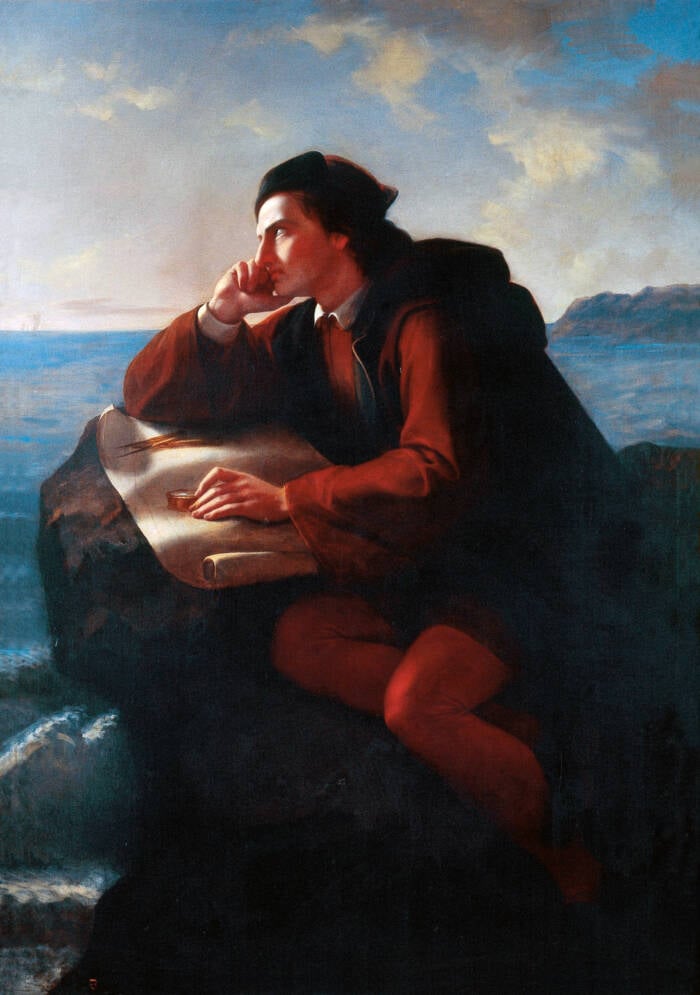
Wikimedia CommonsThe 1856 painting Inspiration of Christopher Columbus.
As for Christopher Columbus’ true origins, the investigation revealed that Columbus was a Sephardic Jew from Western Europe, likely Spain.
“We have DNA from Christopher Columbus, very partial, but sufficient. We have DNA from Hernando Colón, his son,” Lorente said in the documentary. “And both in the Y chromosome (male) and in the mitochondrial DNA (transmitted by the mother) of Hernando there are traits compatible with Jewish origin.”
This exciting new discovery comes at a fitting time, coinciding with the 532nd anniversary of Christopher Columbus’ arrival in the New World. However, some scientists have begun to cast doubt on these claims, with further debate likely to come when the new results are soon published in a peer-reviewed journal.
After reading about Christopher Columbus’ final resting place and his roots, dive into the debate about who discovered America first and why it may have been Leif Erikson. Then, read through a few shocking Christopher Columbus facts you probably didn’t know.





